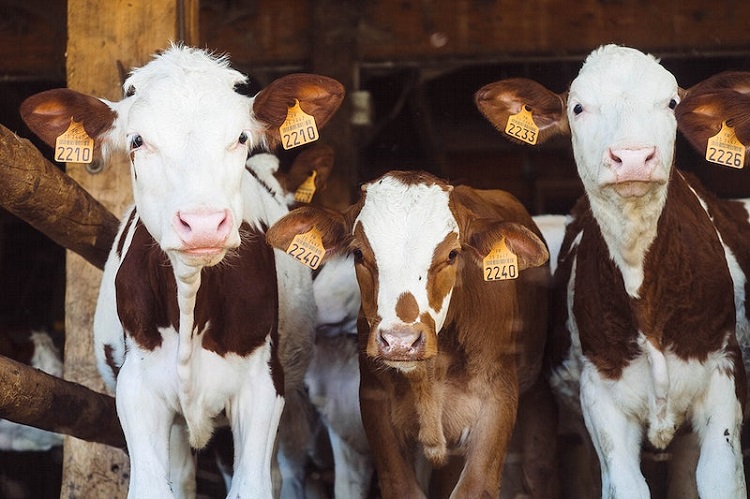Many people don’t know what veal is or why consuming this product is irresponsible and cruel. When you eat veal, you’re eating an animal that is often little more than a fetus. The farmer waited long enough for the mother to carry her baby before he butchered it for consumption on your plate.
Male calves are useless in the industry, and cows must give birth to produce milk. The result is that male calves cannot produce milk, so they serve no purpose other than to drink the mother’s milk, which the farmer wants to sell.
If this male calf has not reached puberty, which it does at around nine months, and weighs 750 pounds or less, it could become veal for human consumption.
As brutal as it sounds – it is precisely that. And it sounds a little like breeding human babies to use for their body parts so you can live longer after abusing your body with excesses. Babies to the rescue – woohoo! Just a little sick? No – a LOT, SICK!
What Type of Meat is Veal?
Veal meat is known for its delicate texture and flavor and is often used in gourmet cuisine. Now let’s look at its various types:
Veal Types
Veal is meat from baby cows and comes in various types.
Bob Veal
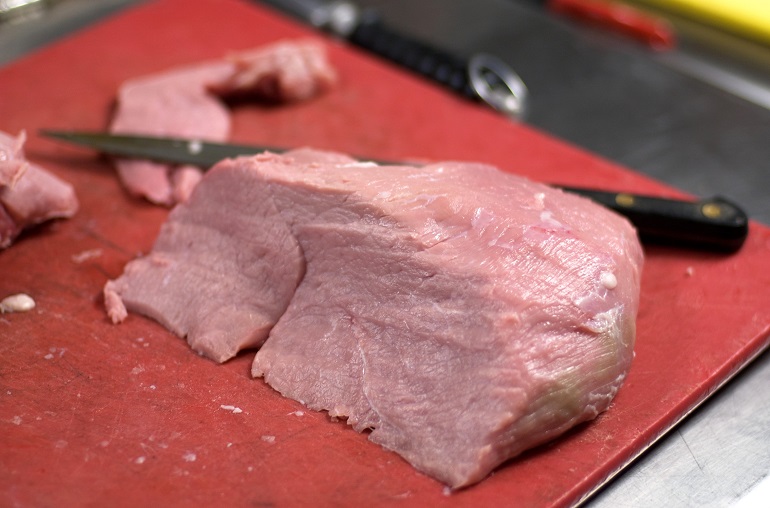
The veal industry uses newborn calves for white veal, also known as bob veal. These young calves can be as young as two hours, up to three weeks of age, and weigh 150 pounds or less. The younger the female or male dairy calves, the more tender their meat is since they haven’t had time to use their muscles.
Slink Veal
It gets worse. Slink veal is so young that it actually comes from harvesting unborn calves or stillborn fetuses. The industry gathers this veal from pregnant cows that have been slaughtered. The word brutal comes to mind. Thankfully, this meat has been outlawed in Canada and the U.S.
Rose Veal
Veal is typically a pale white, cream, or creamy pink. The flesh of these veal calves is white because they’re not given any iron. Rose veal refers to veal calves raised on iron.
Also, these ones are allowed to consume the solid feed. Farmers follow the UK Royal Society for the Prevention of Cruelty to Animals Freedom Food program when rearing these calves.
Nonformula-fed Veal
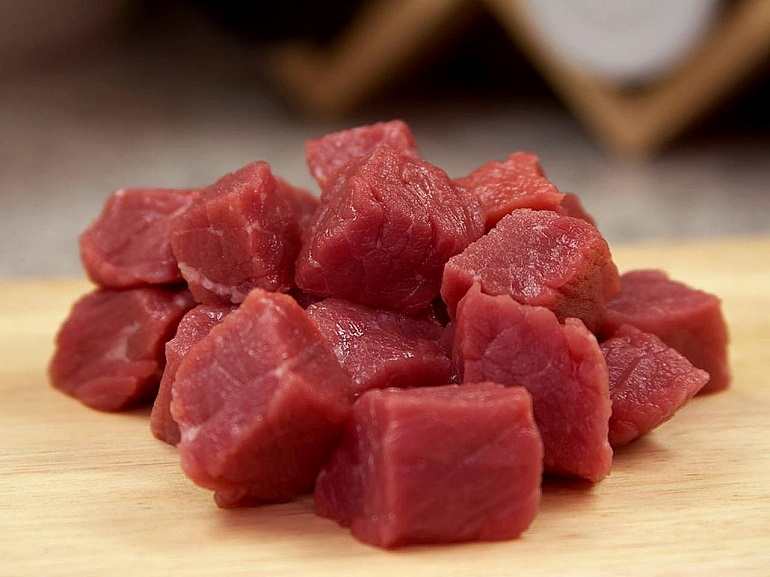
Other names for this veal are grain-fed and red. These calves eat a diet of milk and grain, hay, and fibrous food. Because of this diet, their meat is darker and has fat and marbling, unlike the other calves.
Another difference is that calves between 22 and 26 weeks of age weighing 650 to 700 pounds in Canada are classified as calves rather than veal.
Formula-fed Veal
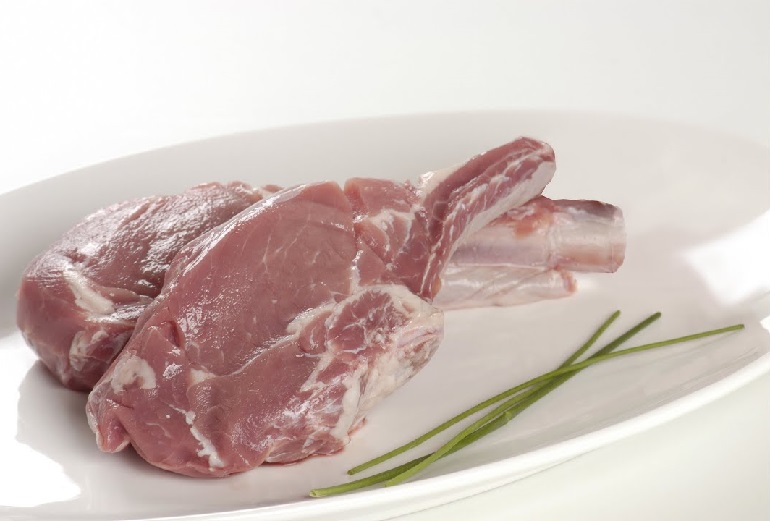
Most veal production in the U.S. involves milk-fed calves. Farmers in Canada slaughter their calves raised for veal when they reach about 450 and 500 pounds between 20 and 24 weeks of age. Other names for this milk-fed veal stream are special fed, white, and milk-fed.
Farmers feed the calves fortified milk formula and solid food. Soya is often a milk replacer for these animals. The color of this veal ranges from ivory to creamy pink. The texture of this tender meat has a velvet appearance and is fine and firm.
Where Does Veal Come From?
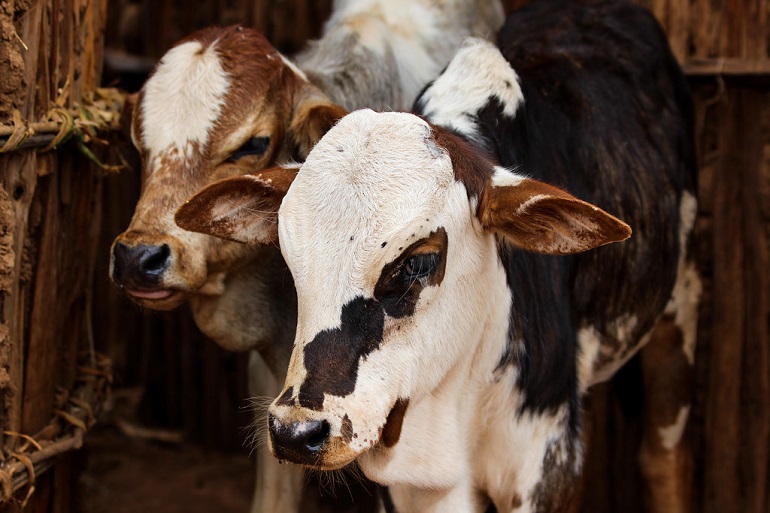
Veal comes from the meat of beef or calves, which can be male or female calves. But most veal comes from milk-fed male calves that are not in any breeding programs. This meat is also always extremely young as opposed to regular meat from the beef industry.
Another characteristic of the veal industry is that the dairy farmer focuses on raising veal because the value per pound of young beef is much greater than older beef cattle. This thinking is a way to increase the value of male calves in the dairy industry because they can’t milk dairy bull calves.
Also, farmers feed the young beef animal on whey solids from cheese manufacturing processes in veal production. This tactic achieves two goals, which is to fatten them up with a nutrient-rich product that doesn’t go to waste.
Veal in Culinary Uses
Veal is the meat of choice in many countries like the U.S., Canada, France, Italy, Hungary, and others. People like this meat because of its low-fat content and flavor. Customers buy frozen veal chops to make a variety of dishes. Ground veal is versatile for cooking creative food using various techniques.
Cooked veal stew meat produces a more tender meal than mature dairy beef. Pan broiling is another technique, while roasting, grilling, and stir-frying veal meat are also popular ways to cook ground veal.
Is Veal Cruel?
Veal has long been a controversial meat due to its association with animal cruelty. While some argue that it is a delicious and nutritious food, others claim that its production is inherently cruel and unethical.
Let’s look at the various reasons that make its production inhumane and barbaric:
Separated at Birth
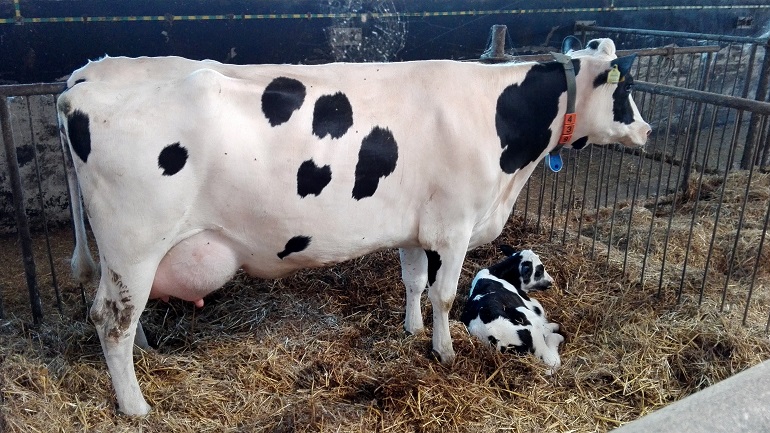
Veal is unquestionably and undeniably cruel. Calves and their mothers usually have a strong bond from birth. The calf becomes healthy by suckling from their mothers for up to a year after birth, which gives them antibodies that strengthen them against infection and disease.
If you separate them at birth, the mother mourns and displays stressful behavior. She cries for days, calling her calf with no response. Assuming the calf is still alive, it also suffers enormous anxiety and stress to the violence of separation. This separation is devastating and cruel to the dairy cow and her calf.
Use of Drugs
Famers give most calves high doxycycline drug doses to treat respiratory disease. This drugging takes place due to the brutal treatment they receive. Doxycycline has even been found in the veal that lands on your plate.
Veal Grading
Prime, choice, good, standard, and utility are the five veal grades. These grades depend on the proportion of bone, fat, and lean meat and the color of the carcass.
Cruelty to Baby Calves
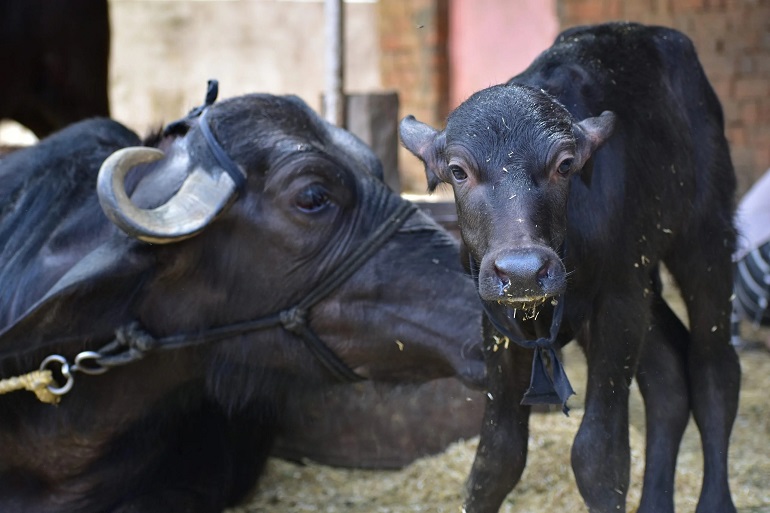
Farm workers are known to mishandle young calves before transport. There are reports of some employees kicking and punching these babies before and while loading them on trucks to go to the slaughterhouse.
Because they are not seen as sentient creatures, they are treated inhumanely. This behavior says more about people than animals, which is incredibly sad about our species.
Veal Slaughter
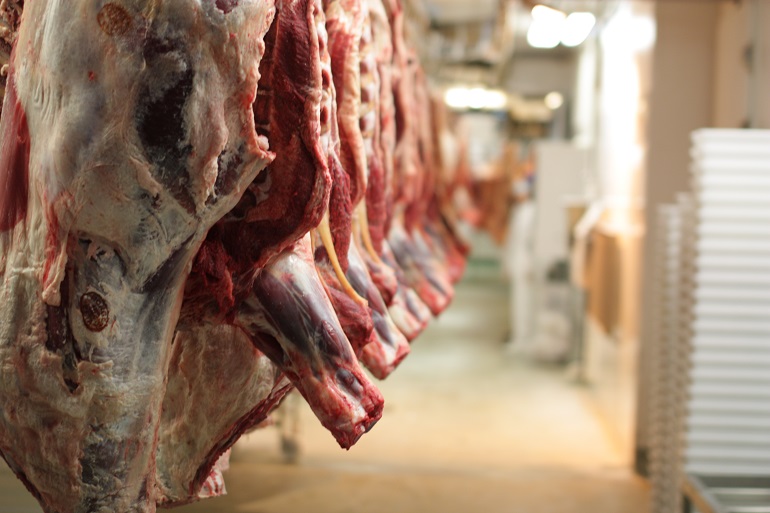
Slaughtering baby cows happens with a bullet if they’re lucky. Otherwise, slaughterhouse employees use a stun gun or electric shock them into losing consciousness. From there, they are hung upside down by their back legs, and their throats are slit.
When you think about it, they are torn from their mothers after birth and are too weak to walk or drink from them before being killed. Or, they have a short few months apart from their mothers before some farm worker beats and punches them to get on a truck.
Once they arrive at the slaughterhouse, they must watch how their friends are punched, kicked, stunned, hung, and bled to death. That sequence of events is terrifying in anyone’s language at any age. Even more so as a baby.
Cruel Transport
Calves are so badly raised that their immune systems and muscles can’t cope with long journeys of standing in cattle trucks. The result is unbearable stress, diarrhea, overexposure to hot or cold temperatures, and exhaustion. The situation is so horrific that between 1 and 23% die.
One million calves are transported around the E.U. every year, so you do the math. And, even then, many farmers can’t be bothered to ensure they have decent bedding en route to their death. Add all the drugs, antibiotics, and stress, and you’re eating diseased meat, even if there is no evidence.
How Veal is Raised?
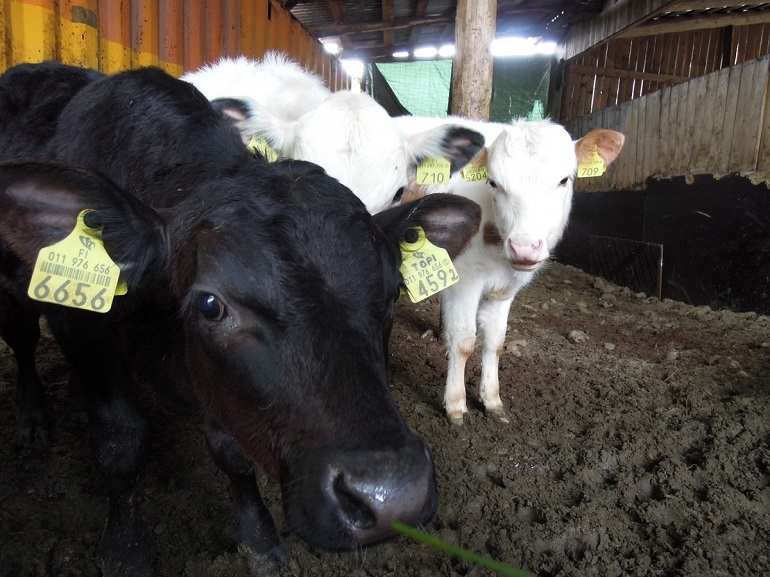
The process of raising veal is a complex one, with many different factors influencing how the animals are treated and cared for. From their diet and living conditions to the way they are transported and slaughtered, every aspect of veal production can impact the quality of the meat and the welfare of the animals involved.
Veal Crates
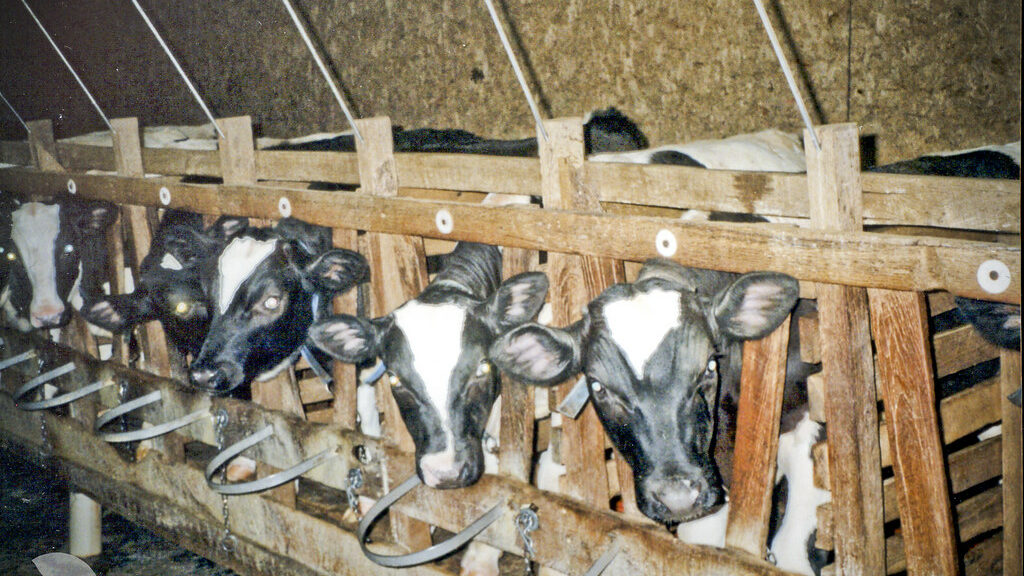
Veal crates measure 2 feet, 2 inches by 2 feet, and 6 inches. The calves’ poop and urine fall through the container. Calves cannot turn in the crate because it’s too small. To make things worse, the farmer tethers its neck, limiting movement further.
Adding to the nightmare, many of these crates are packed in dark spaces where the veal calves cannot see each other. All this sensory deprivation and lack of social interaction equate to excess stress and vulnerability to disease.
It isn’t even worth mentioning that U.S. farmers now raise their milk-fed calves in groups from ten weeks or earlier, and they don’t tether them.
Restricted Space
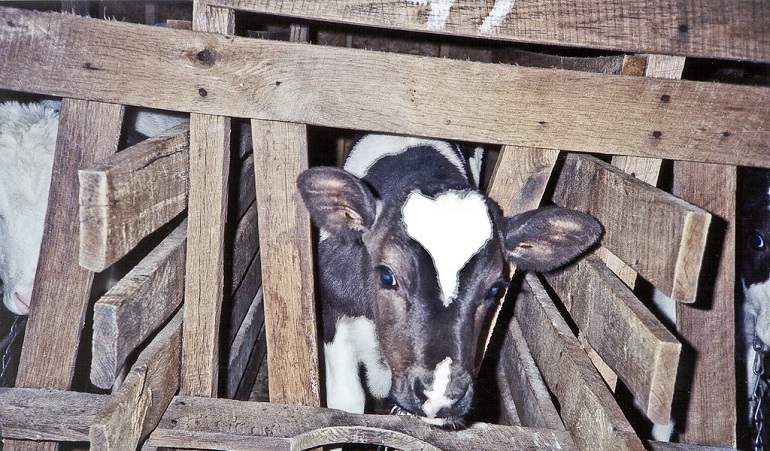
The veal crates are so small that the calves cannot move. This restricted space is due to the belief that movement will make the veal tougher and have more color. It is a brutal and ignorant practice that leads to foot injuries and worse.
Abnormal Gut Development
Some veal calves only get a liquid milk replacer instead of milk or solid feed. This diet is devoid of essential nutrients and adequate nutrition. Because of this, it leads to abnormal rumen development, and the baby cow becomes vulnerable to infectious enteritis or diarrhea and chronic indigestion.
The abnormal gut development leads to hairballs in the gut, inadequate digestion, and malnourishment. Besides this constant physical discomfort, most veal calves do not even receive proper bedding because they might eat the straw.
Abnormal Behavior
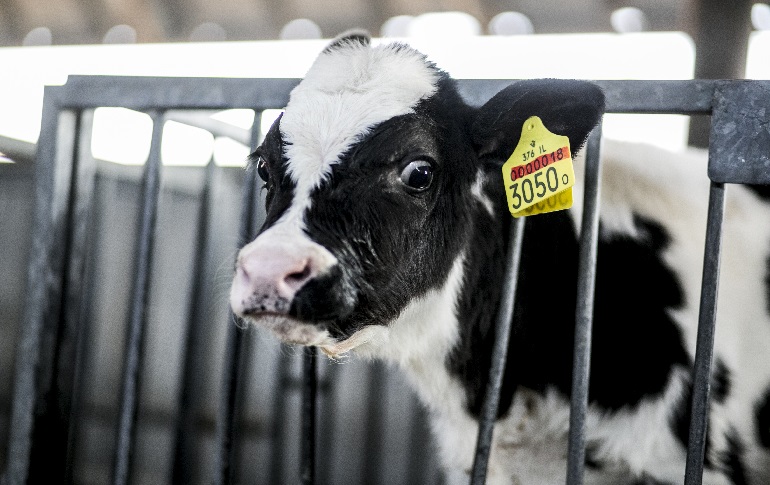
The veal calf develops abnormal oral behavior because it is separated so quickly from its mother that it doesn’t get a chance to suckle. Because of this deprivation, it is never weaned and tries to nurse on anything that has a similar shape as its mother’s teats. It sucks, bites, and licks on items with its tongue rolling around to mimic suckling.
When these calves are raised in groups, they only display abnormal behaviors between 2 and 3% of the time. When grown in crates, calves spend 15% of the time doing this.
High Disease Vulnerability
Male dairy calves have an inadequate iron intake and don’t get enough protein. The low iron intake ensures that their meat stays white, and the low protein helps keep their meat tender. But this lack of nutrition leads to malnourishment. It also suppresses their immune systems and makes them susceptible to disease.
What Happens to Bull Calves That Are Not Reared For Veal?
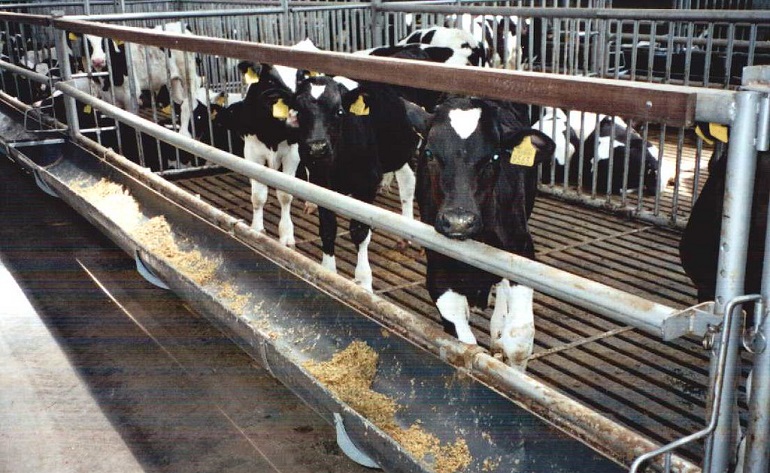
The dairy industry is particular about how it makes profits. It must have adult female cows to produce milk, the primary source of income. To produce milk, the dairy cow must give birth. If the cow births a female calf that doesn’t meet milk-producing or breeding standards, that little one becomes fodder for slaughterhouse veal.
Likewise, if the mother births a bull calf, it cannot generate milk and is not always suitable for breeding, so its fate is the same as that of the female calf. It becomes bob veal.
Veal Facts and Statistics
Veal farming statistics should be separate from the beef industry because veal production is a niche market and requires different production techniques.
Are Hormone Injections Employed for Veal Development?
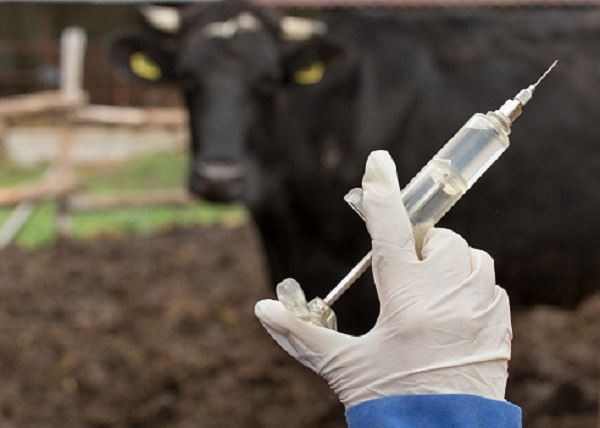
Veal farmers have to treat veal calves with antibiotics to keep them healthy and alive for long enough to make a profit. And because the conditions in which calves are raised are often incredibly stressful, they are susceptible to diseases and infections.
Beef boards and customers should be more concerned about this market because high antibiotic use creates antibiotic-resistant bacteria. The same concept is relevant in pig and poultry farming, so it is an excellent time to educate yourselves about what you’re eating.
Veal Consumption by Humans
Although the veal produced is low compared to other meats, it is still high in terms of eating specially fed baby calves. The meat consumption statistics for this industry in the U.S. are that one person eats about 0.2 pounds of veal per capita. Thankfully, this figure dropped from 0.7 pounds in 2000 but needs to decline further.
Other countries which lead the way in veal calf raising are mainly in Europe. These include Germany, France, and Italy, with the Netherlands, Italy, and France being the highest veal producers.
Is Veal Healthy?
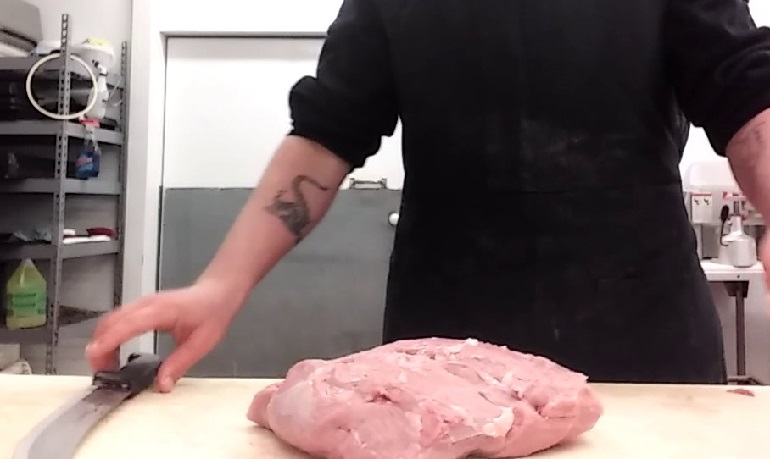
The veal industry wants customers to think that veal is healthier for the planet. But how can eating something that has to have so many antibiotics be beneficial for people? It isn’t.
Although veal is young meat, it still contains over 100 milligrams of cholesterol for every 100 grams of beef. This statistic equals three times more than healthy daily recommendations.
Extensive Indoor and Outdoor Production
Instead of using current veal-raising methods, other alternatives are available which are much healthier. Indoor choices for improving veal calf welfare include bedding beyond two weeks. The RSPCA now regulates their bedding, requiring one made from deep straw.
The RSPCA also requires veal farming to ensure calves have enough iron, solid foods, and fiber in their diets. Regrettably, the RSPCA still allows the use of veal crates but disallows the transport of veal calves out of the country.
Farmers should also allow outdoor access to the calves to get fresh air and feel the grass under their feet and the sun on their little bodies.
In terms of suckling, this would be better from their mothers before being slaughtered as the psychological and physical suffering would be less. But the current standards ensure the calves can suckle from older dairy cows in retirement.
Allowing these calves to remain with their mothers and to roam free in a pasture would be the ideal welfare option. Until then, you can help by not supporting the dairy industry.
Animal Welfare
Veal production has been coming under scrutiny from animal welfare organizations and consumers alike. As a result, many producers have adopted more humane practices in recent years, though the industry still faces significant challenges in this area.
Crate Bans
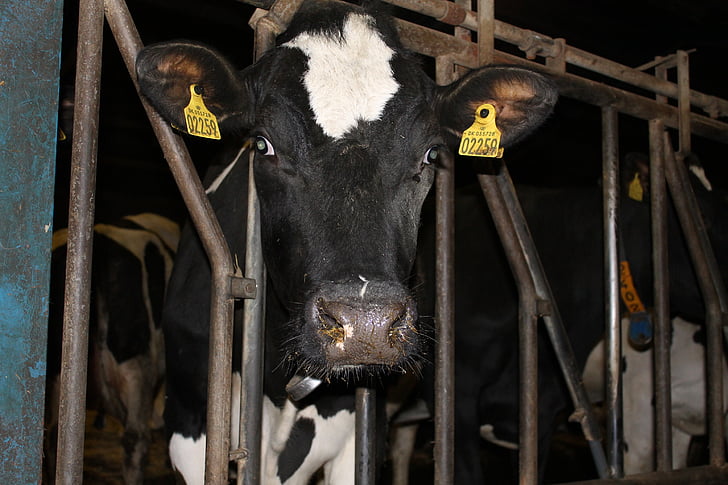
Despite ongoing discussions with the cattlemen’s beef board and other authorities, veal crates are still legal in many U.S. states. Likewise, they are legal in Canada and the U.K. but are banned in the European Union. Still, the suffering of veal calves raised in 2.62 to 5.9 feet cages is unbearable.
Because customers want tender, white, antibiotic-filled meat on their plates, these tiny calves are torn from their mothers at birth. They don’t get to build strong immune systems by suckling her nutrient-rich milk, either.
Instead, they are subjected to unbelievable cruelty in tiny veal crates that prevent movement. Why? Because it keeps their meat tender to satisfy consumers’ appetites.
How Can You Help?
As consumers, you have enormous power to dictate what veal farmers and food manufacturers make. If you don’t buy their product, they are not motivated to continue providing it. Say no to veal, and the demand will decrease to the point where it is not profitable.
And because the dairy industry has close ties with veal farming, reducing or eliminating milk from your diet will send an even clearer message that you don’t want to be a part of their suffering.
FAQ’s
Why Does Veal Taste Different from Beef?
Veal calves have tender white meat and are supposedly minimally processed. Despite this desirable tenderness, the meat is often white due to nutritional deficiencies. Beyond these “minor” aspects, the flavor of the meat from calves is supposedly more delicate, according to those with “discerning” palates.
Unfortunately, these same people have absolutely no palate when it comes to registering the cruelty phenomenon of how veal calves are treated.
Is There Such a Thing As Humane Veal?
The organization known as Compassion in World Farming U.K. is making great strides in ridding the farming industry of cruelty. It has improved the veal industry by creating better standards for rose veal production. The organization has done this by instigating farmers to feed their veal calves a more normal diet.
But this is a long journey as the European Union still refuses to improve its calf bedding standards, so it does not provide these animals with bedding after two weeks. A humane approach would be to ensure they can sleep comfortably on straw beds, but because everything is about money and greed on veal farms, this doesn’t happen.
The U.S. also still uses veal crates, as do other countries. Likewise, the inability to move in these crates causes immense suffering and is horrifically cruel. Despite such blatant disregard for their living conditions, veal farmers do little to improve the lot of these crated calves.
Over and above these issues, farmers still choose to slaughter veal calves before they’ve even had a chance to suckle from their mothers. If any of this sounds remotely humane, you probably need help.
How Is Veal Legal?
Veal calves lead short, incredibly miserable lives as crated calves despite being newborn babies. The only reason veal is still legal is because you buy this meat. Stop buying this product, and you end their suffering.
But you can also tell others how cruel this industry is and how veal calves are treated. Improving your knowledge and theirs will help end this industry.
How Is Veal Inspected?
In the U.S., either the relevant state authority or the USDA inspects the internal organs of the veal for signs of disease.
These state organizations have specific standards and regulations for checking veal and other meat to ensure they’re safe for human consumption. They also check that the veal is appropriately packaged and labeled in line with health requirements.
Conclusion
You can ease the suffering of dairy cows and dairy calves by leaving this meat off your menu. Go further and continue your education to be well-informed enough to speak with conviction. When you know more about your topic, you’re more convincing.
Educate yourself about veal raising so that you can educate others. In the interim, you can join several organizations supporting healthy veal farming practices without cruelty.


